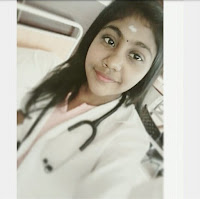Anemia Test No. 1: Complete Blood Count (CBC)
If you’re experiencing symptoms of anemia , the most common diagnostic test is a complete blood count, known as a CBC. A CBC involves taking a small blood sample and analyzing its components, including the red blood cells, white blood cells, and platelets. “It tests at all the elements of the blood, but mainly looking at the red blood cells because a low red blood cell count can mean anemia.
The CBC also measures levels of hematocrit (the percentage of red blood cells found in whole blood) and hemoglobin (an oxygen-carrying protein in the blood). Low levels of either hematocrit or hemoglobin can indicate an anemic condition.The complete blood count is the main test used to make a general diagnosis of anemia.
Anemia Test No. 2: Reticulocyte Count
One such diagnostic test is a reticulocyte count, which measures the number of immature red cells in the blood. These cells are produced by bone marrow, and a high reticulocyte count could mean that your symptoms of anemia are due to blood loss, either through hemorrhaging, heavy menstrual periods, or sources of blood loss.
“If your bone marrow is responding very well and producing lots of red blood cells, then the reticulocyte count should be high because the red blood cell factory is working overtime to make up for those lost red blood cells,” said Liu.
A low reticulocyte count, on the other hand, means that your bone marro is not producing enough red blood cells. This is most commonly caused by a nutritional deficiency. Folate deficiency can also be a cause of a low reticulocyte count, though it’s less common in the Western world because many foods, such as bread, are fortified with folate. People who have cancer or are undergoing radiation therapy may also experience low reticulocyte counts, as well as those whose kidney function is impaired.
Once the cause of the low reticulocyte count has been determined, your doctor can decide how to treat your anemia, Liu said. If a low reticulocyte count is caused by nutritional gaps, you can take supplements of appropriate vitamins, such as iron, B12, and folate. If your reticulocyte production has been suppressed due to kidney problems, a physician may treat you with injections of erythropoietin, a hormone produced by the kidneys that tells the bone marrow to produce more red blood cells.
Anemia Test No. 3: Blood Smear
Another test that helps search for anemia causes is a blood smear. This test, which is performed by spreading a drop of blood on a slide and staining it with a special dye, can detect irregularities in red blood cells, white blood cells, and platelets. Abnormal red blood cells can tell your doctor more about your anemia. For example, unusually large red blood cells can indicate anemia caused by a vitamin deficiency, while crescent-shaped red blood cells can mean you have sickle-cell anemia, an inherited disease.
The treatments that your physician prescribes after a blood smear will depend on the test results. If your blood smear reveals vitamin deficiencies, changes in diet or taking vitamin supplements may be the only treatment you need. There is no cure for sickle-cell anemia, but patients are often told to stay hydrated and in good health because being in less-than-ideal physical condition can cause painful episodes, known as “sickle cell crises” that occur when misshapen red blood cells form clumps in the bloodstream.People with moderate to severe sickle-cell anemia may also be prescribed a drug called hydroxyurea to prevent episodes of pain.
Anemia Test No. 4: Iron Panel
If your doctor suspects that your anemia is due to an iron deficiency, she may order an iron panel, a blood test that measures the level of iron in your blood. This test is often used when your doctor believes that your iron deficiency is caused by blood loss, such as bleeding in the gastrointestinal tract.
Treatment for iron deficiency involves taking iron supplements, usually in pill form. Those who cannot tolerate oral iron supplements can also take it intravenously or by an injection into the muscle.






